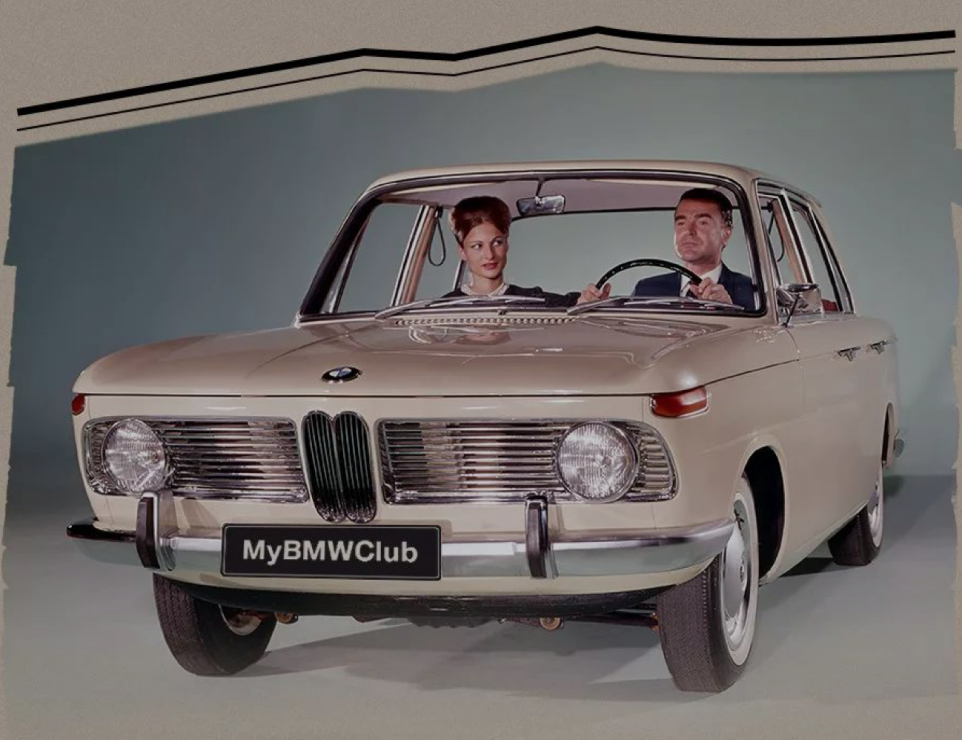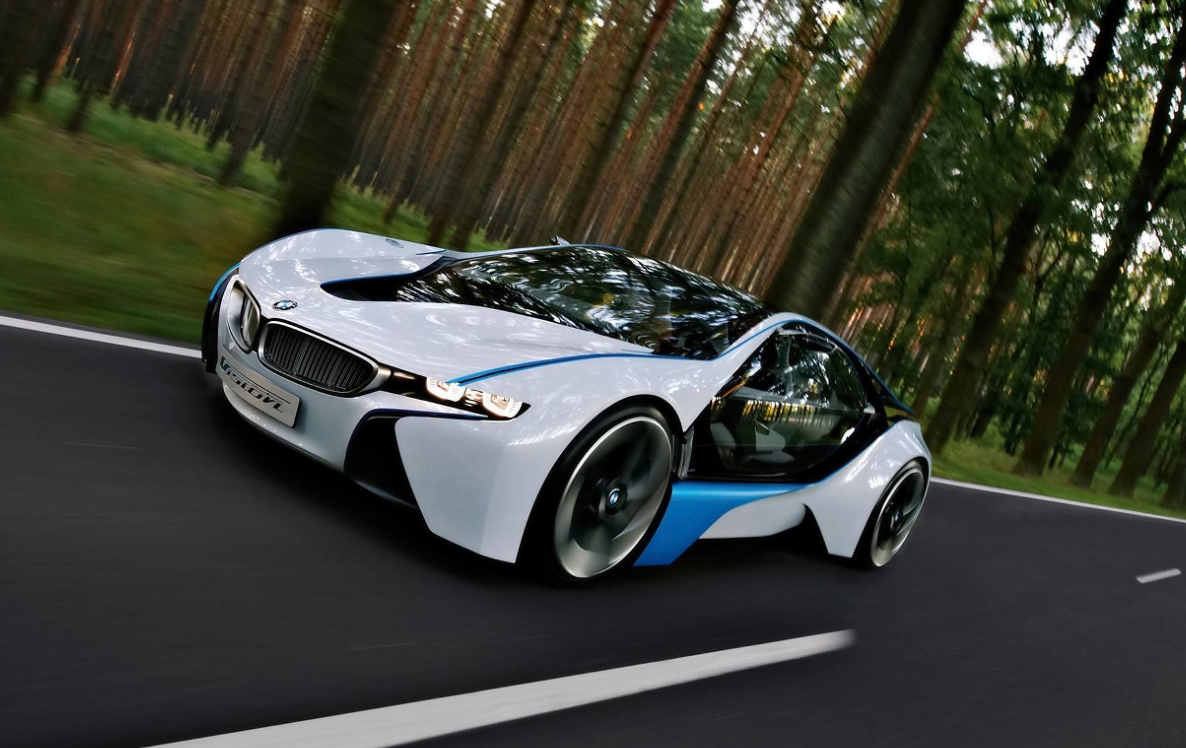Author: Wang Hui
In November 1918, World War I ended and Germany became a defeated country. Manufacturers such as BMW were forbidden to produce aircraft under the Treaty of Versailles. To overcome this restriction, BMW purchased a motorcycle factory from Helios. However, BMW soon discovered that the factory was of no use and on the verge of bankruptcy. BMW turned the situation around and achieved success.
After World War II ended in 1945 and Germany accepted unconditional surrender, BMW introduced the four-door 502 model upgraded from the 501 model in 1954. It featured a brand-new V-8 engine, signaling a breakthrough for the company after the war. BMW was determined to build a career in luxury coaches, sports cars, and motorcycles after the restoration, igniting a glimmer of hope for the revitalization of the industry.
Today in the 21st century, BMW faces a new challenge called the transition to new energy. As a century-old enterprise, every move and action by BMW attracts attention, and people are constantly guessing its future.
As early as 1972, BMW unveiled its first pure electric vehicle, the 1602 Elektro-Antrieb, at the 20th Olympic Games in Germany. Equipped with a 350 kg lead-acid battery, it could reach a speed of 50 km/h and travel 65 km. In the following years, BMW continued to research electric and hydrogen fuel cell vehicles by launching the E1 electric car.
Despite many misunderstandings and technical obstacles during this process, BMW did not give up its efforts to develop environmentally friendly cars. After the release of the E1, there were many challenges to overcome. The sodium-sulfur battery used by the E1 had a working temperature of 300 degrees Celsius and decreased by 3 degrees Celsius per hour, which meant that if the battery was not charged for several days or regularly, it would become a stone, and its short lifespan of the battery, which was obviously inconsistent with the engineers’ judgment of requiring “a five-year lifespan and a selling price of £1500”.
Mileage and batteries may have hinted at the problems of the new energy vehicle market from then on. After that, BMW started to research small diesel turbocharged engines and began to consider manufacturing hydrogen-powered cars.
In 2003, BMW manufactured 15 hydrogen-powered cars. However, it was apparent that hydrogen fuel cell vehicles were difficult to gain government support, as the infrastructure and economic support needed for their construction and cost far exceeded the requirements for internal combustion engines. In these 20 years, BMW’s research funding for hydrogen-powered cars was a huge astronomical figure.
Over the past nearly 50 years, BMW’s technology development team has been focused on internal combustion engines for a long time. The management and development personnel have already been in a comfortable zone, but electric cars are entirely new to the development team, and they can be said to have little experience.## BMW’s Strategy in the Internal Combustion Engine Field Has an Advantage, but This Advantage Brings Significant Risks to the Development of the Group’s Electric Vehicles.
Therefore, BMW’s Board of Directors has created a completely independent business unit, Project i. Starting in 2008, BMW has formulated a plan for the development of electric vehicles and carried out independent research and development of important components.
Different from other car companies retrofitting electric vehicles on the original vehicle platforms, BMW Group has created a brand new platform and developed electric vehicles from scratch. The project took 7 years and invested billions of dollars before the mass production of BMW i3 in 2013.
In the early stages of the Project i project, BMW chose the Mini Cooper and BMW 1 Series two-door three-box models, respectively named Mini-E and Active E. The former increased the weight of the entire vehicle by 300 kilograms after modification, and the latter increased it by 400 kilograms, reaching 1815 kilograms. Therefore, the most important experience gained by the team is that the weight gain problem of the battery needs to be balanced through lightweighting of the vehicle body.
In November 2009, a concept car named Vision was born, the full name of which is BMW Vision EfficientDynamics, abbreviated as ED. The car body framework and chassis are made of aluminum and carbon fiber composite materials. The application of CFRP technology has become a key breakthrough in the problem of vehicle weight.
After three years of the birth of the concept car, the plug-in hybrid supercar i8 Concept appeared on the magazine cover, which is a more perfect VISION concept car. At the same time, BMW’s urban electric car i3 also appeared in the magazine. At this stage, BMW’s battery system has been determined to be lithium-ion.
The next year, BMW released the i3 Concept Coupe concept car at the Los Angeles Auto Show, which is a three-door hatchback version of the i3 concept car from the previous year. The pure electric drive i3 Concept Coupe outputs 170 horsepower and 250Nm of torque, with a range of 160 kilometers when fully charged. This successfully reduced the weight of the vehicle body at a lower cost, and increased the range, which further strengthened BMW’s confidence.
BMW has jointly opened a carbon fiber factory in Moseslake, Washington, USA to produce the carbon fiber body required for electric vehicles. The carbon fiber reinforced composite plastic used by BMW is 50% lighter than steel and 30% lighter than aluminum, making BMW the first car brand to make this attempt among enterprises.
Compared with previous vehicle models, both the i8 and i3 conform to aesthetics and significantly reduce the weight of the vehicle body from both the aspect of appearance and technology, which has attracted a lot of attention.Unfortunately, the performance of the i brand did not meet BMW’s board of directors’ expectations. Starting in 2016, the i brand’s founding team continued to leave, leading to fragmentation, research work was shelved, and business development was also underestimated, from which BMW’s pace in the new energy field began to slow down.
It is reported that the i3 will be officially discontinued in July this year, which is two years earlier than the previously announced 2024, and the i8 has already been discontinued in 2020.
In 2016, BMW introduced the new sub-brand i performance, based on previous technological achievements, the new sub-brand became the exclusive brand of plug-in hybrid models under BMW. The new strategy allowed BMW’s new energy vehicle sales to grow rapidly.
On November 29, 2018, the Los Angeles Auto Show officially opened. Prior to this auto show, BMW also officially released the iNEXT new energy brand plan and had a global debut of the BMW Vision iNEXT.
From the launch of the i3 in 2013 to the iNEXT strategy in 2021, we can see a big turning point in BMW’s independent brand operation.
The BMW Vision iNext is a concept car based on the BMW new energy concept, using the fifth-generation electric powertrain system of the BMW Group, with a range of more than 600 kilometers, achieving L3 autonomous driving, and with L3 autonomous driving technology. The 0-100km/h acceleration is below four seconds. Another highlight is that future versions will use “solid-state battery technology”.
Former BMW R&D director Fu Lexi once said, “I am encouraged by the development of Chinese new energy vehicles and intelligent cars. This car will not have any competitors in the market for a short period of time.”
At the same time as the iNEXT was launched, BMW also emphasized that it will focus on pure electric vehicles in the Chinese market in the future.
In 2019, BMW announced that it will achieve the layout of 25 new energy vehicle models, including BMW brand electric vehicles such as iX3, i3, i4, as well as electric vehicles from other brands such as MINI and Rolls-Royce, by 2023.
At the end of 2019, Sun Wei, the vice president of corporate affairs at BMW Greater China, revealed to the media that BMW is expected to deliver 500,000 new energy vehicles to global customers by the end of that year, and plans to deliver 1 million new energy vehicles to global customers by 2021.Soon after the target declaration, in March 2020, BMW announced again that “25% of its European sales will be new energy vehicles in 2021; one-third by 2025; and half by 2030.”
In 2021, BMW once again announced boldly that “the BMW Group plans to accumulate sales of 2 million electric vehicles in the next two years. By 2022, the sales of pure electric vehicles will double that of this year. By 2025, the BMW Group will deliver approximately 2 million pure electric vehicles to customers. By 2030, one out of every two cars sold by BMW Group will be pure electric vehicles.”
Dual efforts in the fields of intelligent network connectivity and electrification are not easy. Therefore, Fu Lexi predicted that with the rapid development of technology, it would be necessary to cooperate with more leading enterprises and make full use of external resources to gradually develop and verify these future technologies and invest them in the market.
In the late 1950s, BMW 1500, which was launched by BMW, was widely popular and known as the “NEW CLASS” car. Since then, BMW has unveiled a series of “NEW CLASS” models.
Today, “NEW CLASS” also constitutes BMW’s thorough rethinking of the core of automobiles: freeing itself from today’s segmented markets and architectures. With the principle of electric travel first, BMW is innovating the basic logic of its products and combining it with a brand-new automobile architecture.

This article is a translation by ChatGPT of a Chinese report from 42HOW. If you have any questions about it, please email bd@42how.com.
